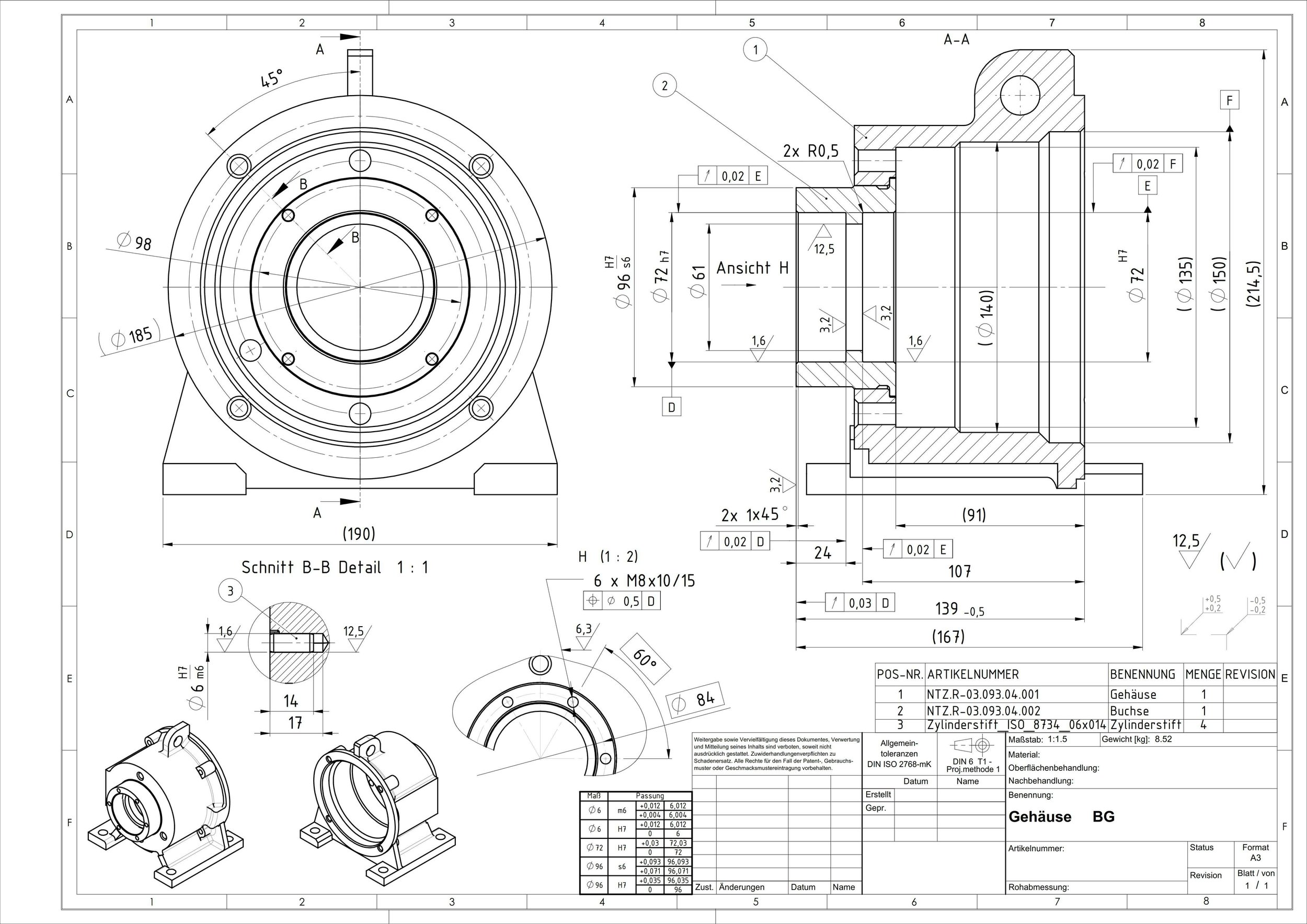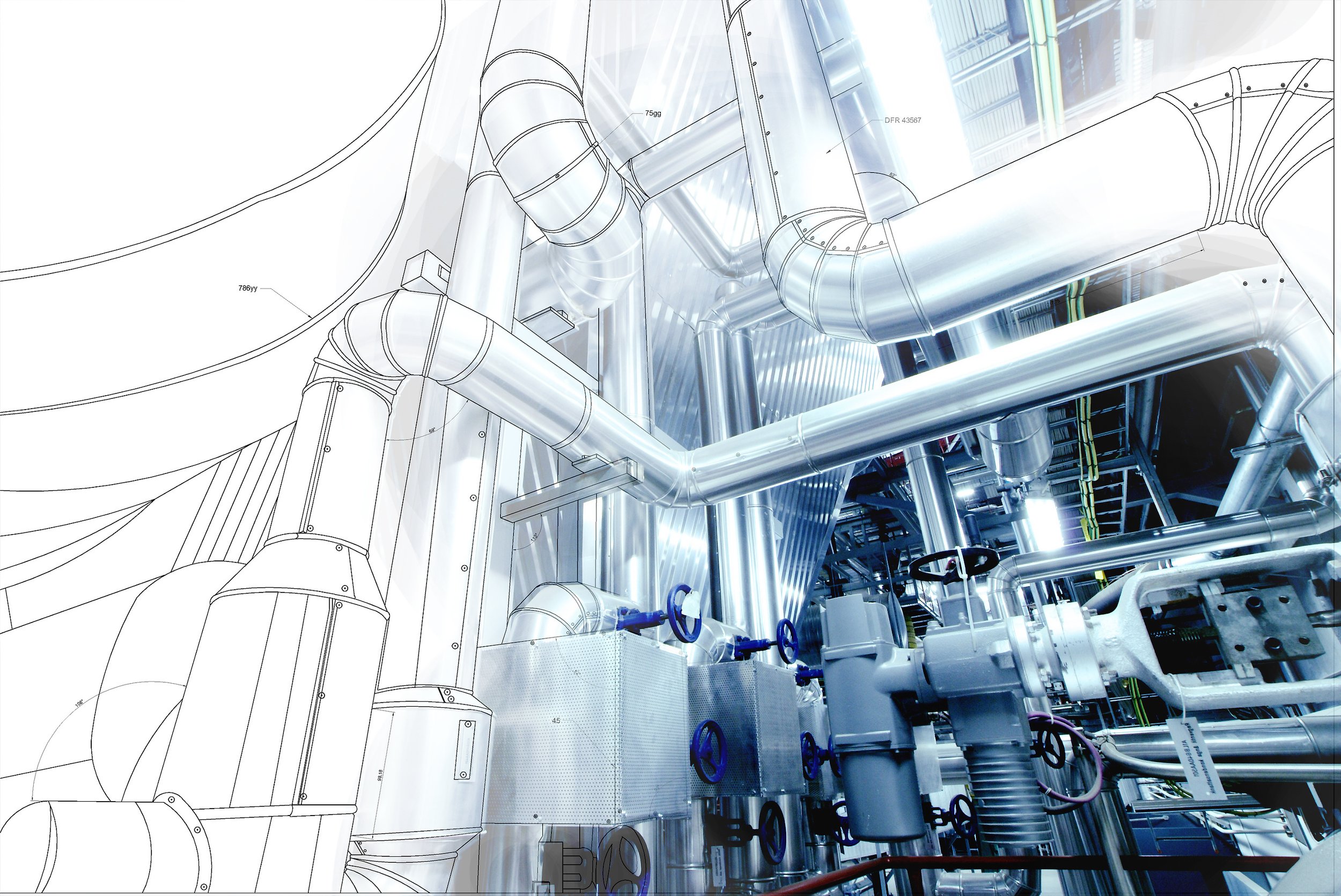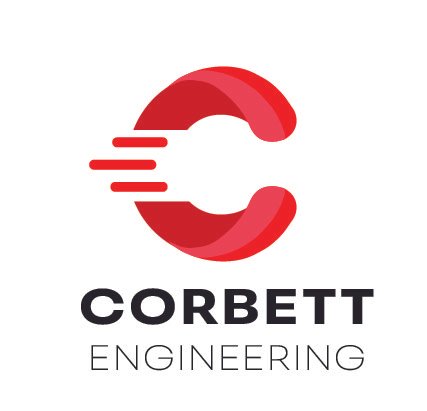
Navigating Pressure Gauges:
A Comprehensive Resource for Engineers
Welcome to Corbett Engineering’s ultimate guide to pressure gauges, your one-stop resource for understanding, selecting, and maintaining pressure measurement instruments. Pressure gauges are essential for various industrial, commercial, and residential applications. Monitoring pressure levels ensures the systems' safe and efficient operation.
Whether you are a seasoned engineer, technician, or a newcomer, this guide will help you with the fundamentals and advanced aspects of pressure gauges.

The Essential Function: What Pressure Gauges Do and Why It Matters
A pressure gauge is a device used to measure the pressure of liquids or gasses within a system. It visually displays pressure levels, typically in units such as pounds per square inch (PSI), Pascals (Pa kPa), or bar, helping operators control and monitor operations safely.
Don’t have time to read the full guide now? Download a PDF version to read later!
Choosing the Right Gauge: Understanding Types of Pressure Gauges and Their Roles
Pressure gauges are essential for various industries, providing critical readings that help maintain system efficiencies and safety. The technology behind each type of pressure gauge varies, catering to specific environmental conditions and applications. Here, we explore five common types of pressure gauges: Bourdon tube, diaphragm, digital, capsule, and differential pressure gauges.
Bourdon Tube Pressure Gauges
Bourdon tube pressure gauges are among the most widely used to measure gas and liquid pressure. A Bourdon tube is a thin-walled, hollow metal tube bent into a C-shape or spiral that straightens out when pressurized. This mechanical movement is translated through a series of linkages and gears to a pointer on a dial face, providing a pressure reading.
The popularity of Bourdon tube gauges stems from their simplicity, durability, and accuracy. They are suitable for various applications—from plumbing to chemical processing—and can measure pressures from vacuum to thousands of psi. The material of the Bourdon tube (commonly brass, stainless steel, or Monel) can be chosen based on the media and environmental conditions, making them versatile for harsh environments.
Digital Pressure Gauges
Digital pressure gauges offer high accuracy and ease of reading, as provided by digital displays. These gauges use sensors to convert pressure into an electrical signal, which is then displayed numerically. Digital gauges often come with features such as backlighting, data logging, and alerts for abnormal conditions, making them ideal for precise applications that require regular monitoring and record-keeping.
Their accuracy and functionality make digital pressure gauges a favorite in critical applications, such as aerospace and laboratory environments, where precise data collection is crucial. Moreover, their ability to interface with computers and other digital systems allows for automated control processes and detailed monitoring.
Capsule Pressure Gauges
Capsule pressure gauges are designed to measure very low pressures, such as those commonly found in HVAC systems and gas distribution networks. These gauges use two corrugated diaphragms sealed around the edges to form a capsule. As pressure changes, the capsule expands or contracts, and this movement is translated into a pressure reading through mechanical linkages.
Due to their high sensitivity to slight pressure variations, capsule gauges are used in scientific and medical equipment and environmental monitoring systems where precision is vital.
Diaphragm Pressure Gauges
Diaphragm pressure gauges are used for lower-pressure applications and are particularly effective when dealing with viscous fluids or gases that might clog other gauges. These gauges feature a diaphragm, a flexible membrane separating the indicator from the measured medium. Pressure changes cause the diaphragm to deflect, and this deflection is converted into a readable pressure value, typically through a mechanical linkage.
Diaphragm gauges are less susceptible to damage from pulsation and pressure spikes than Bourdon tubes. This makes them ideal for industries like wastewater management and pharmaceuticals, where clogging and corrosive media are common issues.
Case Styles
Blow Out Gauges
Blow-out gauges, also known as safety pattern gauges, are designed for environments where safety is paramount, such as oil and gas extraction and chemical processing. These gauges are equipped with a solid front and a blow-out back. This construction ensures that any expelled parts or media will be directed away from the operator in case of a gauge failure, minimizing the risk of injury. Blow-out gauges are essential for high-pressure applications where the potential for explosive decompression or rapid pressure release exists, offering an additional layer of safety in critical monitoring situations.
High Pressure Gauge
High-pressure gauges are critical for applications involving substantial pressure levels, such as hydraulics, pneumatics, and industrial processing systems. Designed to withstand pressures typically ranging from 10,000 psi to 60,000 psi, these gauges are constructed with robust materials like stainless steel to resist harsh environments and ensure durability. High-pressure gauges provide precise measurements critical for maintaining operational safety and efficiency. They are commonly employed in sectors such as oil and gas, mining, and heavy machinery manufacturing, where monitoring system pressure accurately is essential to prevent equipment failure and ensure safe operations.
Differential Pressure Gauges
Differential pressure gauges are specialized devices used to measure the difference in pressure between two points. They are essential in applications where this differential is critical to the operation or quality of the output, such as filtration systems, heat exchangers, and flow rate calculations.
The gauges typically have two inlet ports, each connected to one of the points between which pressure is measured. The indicator displays the pressure difference, crucial for process control in chemical plants, refineries, and other industrial settings where precise pressure differential measurements are necessary.
Where Measurement Meets Application: The Use of Pressure Gauges in Various Fields
Pressure gauges are critical components in many industries, playing pivotal roles in ensuring safety, efficiency, and compliance with industry standards. Their applications span across various sectors, each with unique requirements and challenges. Below is a detailed look at how pressure gauges are indispensable in several key industries:
-

Oil and Gas
In the oil and gas industry, pressure gauges are essential for monitoring and controlling the extreme pressures encountered during drilling operations and within pipelines. Accurately measuring pressure is crucial for preventing blowouts during drilling, which can have catastrophic environmental and safety consequences. Additionally, in pipeline systems, pressure gauges help ensure that the flow of oil or gas is maintained at safe levels, preventing leaks and ruptures. The robust construction of these gauges allows them to withstand the harsh environments and abrasive materials typical in oil and gas extraction and transportation, thereby safeguarding operations and facilitating efficient resource management.
-

Pharmaceuticals
Pressure gauges in the pharmaceutical industry are vital for maintaining the integrity of process lines and ensuring sterile conditions. These gauges monitor the environments where drugs are manufactured, ensuring that pressures within autoclaves, reactors, and pipelines remain within strict limits to prevent contamination and ensure product purity. Accuracy is paramount in this sector because even minor deviations can lead to significant product quality issues or regulatory non-compliance. Therefore, pharmaceutical companies rely on high-accuracy gauges that can resist the effects of aggressive cleaning agents and steam sterilization, thus maintaining operational standards and safeguarding consumer health.
-

Water and Wastewater Treatment
In water and wastewater treatment facilities, pressure gauges are crucial in monitoring water pressure throughout distribution systems. These gauges help manage and control the pressure in pipes, ensuring they remain safe to prevent pipe bursts and leaks, which can result in significant water loss and environmental damage. Additionally, pressure gauges are used in filtration systems to ensure that filters are operating correctly and to detect when maintenance or replacement is necessary, thus providing a continuous supply of clean and safe water.
-

HVAC/Plumbing
Pressure gauges ensure that heating, ventilation, and air conditioning (HVAC) systems operate efficiently and within safe parameters. They help diagnose system issues, from verifying proper refrigerant levels to ensuring that air and water pressure within the system are optimal for energy efficiency and system longevity. By monitoring these pressures, technicians can adjust operations to prevent system failures and maintain indoor air quality, ultimately providing comfort and safety to building occupants. Test gauges allow technicians to ensure that there are no leaks in your gas and water lines.
-

Processing and Manufacturing
Manufacturing sector pressure gauges are essential for maintenance and safety checks. They monitor air and hydraulic pressures used in machinery operations, ensuring that equipment runs smoothly and safely. Proper pressure management can prevent machinery malfunctions and accidents, protect workers, and reduce downtime. These gauges help maintain consistent product quality and operational efficiency, which is crucial for competitive manufacturing operations.
-

Food and Beverage Manufacturing
In the food and beverage industry, pressure gauges monitor and control processes involving pressures, such as cooking, fermentation, carbonation, and bottling. Accurate pressure measurements ensure that foods and beverages are processed under conditions that meet safety and quality standards. For instance, pressure gauges help maintain the proper carbonation levels in beer brewing, which is crucial for achieving the desired taste and texture. Similarly, in food canning, pressure gauges ensure that containers are sealed at appropriate pressures to prevent contamination and preserve the food's nutritional value and flavor.

Making the Right Call: Criteria for Selecting the Perfect Pressure Gauge
When choosing a pressure gauge, consider the following factors:
Range: The indicator should have a range that accommodates expected pressures, typically 1.5 to 2 times the maximum anticipated pressure.
Environment: Consider the environmental conditions such as temperature, humidity, and potential exposure to corrosive substances.
Accuracy: Select a gauge with suitable accuracy requirements depending on the application's criticality.
Dial Size and Display: Ensure the dial is readable in the operating environment, and consider a digital display if frequent readings are required.
Material: The gauge's material must be compatible with the measured medium to avoid corrosion or degradation.
Ensuring Precision: Best Practices for
Maintenance and Calibration of Pressure Gauges
Regular maintenance and calibration of pressure gauges are imperative to ensure their accuracy and longevity. These instruments are crucial in various industries for accurately monitoring and managing system pressures. Proper maintenance ensures a pressure gauge's reliability can stay stable, leading to potential safety hazards and operational inefficiencies.
Routine Inspection
Routine inspections are the first line of defense in pressure gauge maintenance. During these inspections, technicians should check for leaks, clogs, and signs of wear and tear. Leaks can compromise system integrity, while clogs might impede the gauge's ability to measure pressure accurately. Wear and tear on mechanical parts can also affect performance. Inspecting these aspects regularly helps identify early signs of malfunction, allowing for timely corrective actions.
Calibration
Calibration is another crucial component of maintaining a pressure gauge. Over time, gauges can drift from their original calibration, affecting accuracy. Regular calibration, performed against a known standard, ensures that each gauge provides precise readings. This practice is particularly critical in industries where precise pressure measurements are vital, such as in pharmaceutical manufacturing and process engineering.
Replacement
Finally, replacing pressure gauges that are damaged or consistently show inaccurate readings is essential. Continuous use and exposure to harsh conditions can irreversibly affect a gauge's components. Replacing these gauges before they fail helps maintain the integrity of the measuring system and prevents downtime or hazardous situations. Regular assessments during routine inspections and calibration can help determine the optimal time for replacement, ensuring that all gauges are reliable and effective in their function.

Navigating Common Pitfalls: Effective Troubleshooting
for Pressure Gauges
In pressure measurement, maintaining the accuracy of pressure gauges is crucial for ensuring the safety and efficiency of operations. Zero error, leaks, and inaccuracy are common issues affecting gauge performance. Addressing these issues promptly ensures that the gauges provide reliable data.
Zero Error
Zero error occurs when a pressure gauge does not return to zero after the pressure is released. This can lead to inaccurate readings, significantly affecting operational processes and safety. To correct zero error, it is necessary to first check the gauge by releasing all pressure and observing if the needle returns to the zero mark. If it does not, recalibration of the gauge is required. Recalibration involves adjusting the gauge to reset its base measurement point to true zero. This procedure ensures that subsequent readings are accurate and reliable. Regular checks for zero error should be a staple in gauge maintenance routines to prevent ongoing issues.
Inaccuracy
If a pressure gauge consistently shows incorrect readings, verifying its accuracy against a known standard gauge is essential. This involves comparing the readings of the suspect gauge under the same conditions with those from a gauge known to be accurate. If discrepancies persist, it may be necessary to replace the inaccurate gauge altogether. Replacing faulty gauges ensures accurate measurements and enhances the operational environment's safety and efficiency.
By vigilantly addressing zero errors, leaks, and inaccuracies, maintenance teams can significantly extend the life span and enhance the reliability of pressure gauges, thereby supporting safe and efficient industrial operations.
Leaks
A pressure gauge system leak can lead to severe inaccuracies in pressure readings and potentially hazardous situations. Ensuring that all connections are tight and that seals are intact is crucial. Periodic inspections should focus on checking for any signs of physical damage or wear and tear at connection points and testing the integrity of seals. If leaks are found, they should be addressed immediately by tightening connections or replacing faulty seals to restore the system’s reliability and accuracy.
Pressure gauges are indispensable tools in many sectors, functioning as critical components for monitoring and managing system pressures. Their role in enhancing system efficiency and ensuring safety cannot be overstated. These gauges come in various types, each designed to meet specific environmental and operational requirements. Understanding the different types of pressure gauges, their applications, and how they are maintained is essential for maximizing system performance and ensuring operational continuity.
At Corbett Engineering, we recognize the significance of these instruments in your daily operations. That’s why we are committed to offering only high-quality, reliable pressure gauges tailored to meet our clients' diverse needs. Whether you are involved in the oil and gas industry, pharmaceuticals, manufacturing, or any other sector where precise pressure measurement is crucial, we have the expertise and products to ensure your systems run optimally.
Our range of pressure gauges is carefully selected to accommodate various applications—from harsh outdoor environments to sterile process conditions. Moreover, we provide comprehensive support and maintenance services to help you keep your pressure gauges in top condition. Regular maintenance and calibration are crucial to preserving the accuracy and longevity of these devices, and our expert team is here to assist you with routine checks, calibration services, and timely replacement of any faulty units.
Corbett Engineering is your trusted partner in pressure measurement. We are dedicated to helping you achieve and maintain your operations' highest safety and efficiency standards. By choosing us, you ensure that your pressure measurement needs are met with the utmost reliability and expertise.
